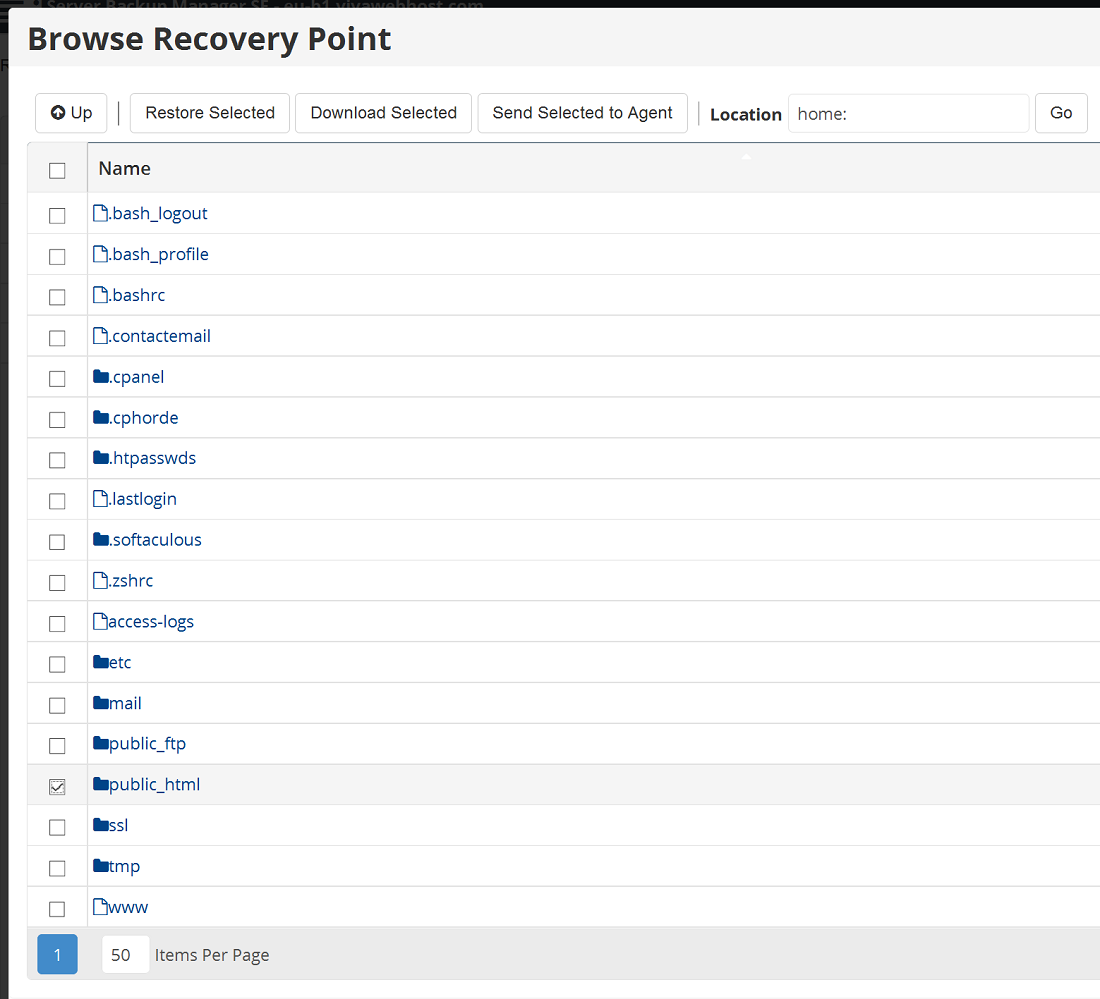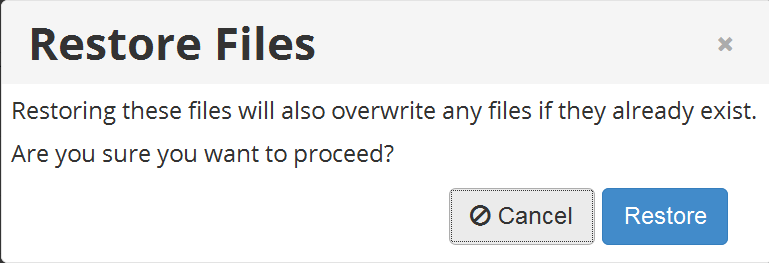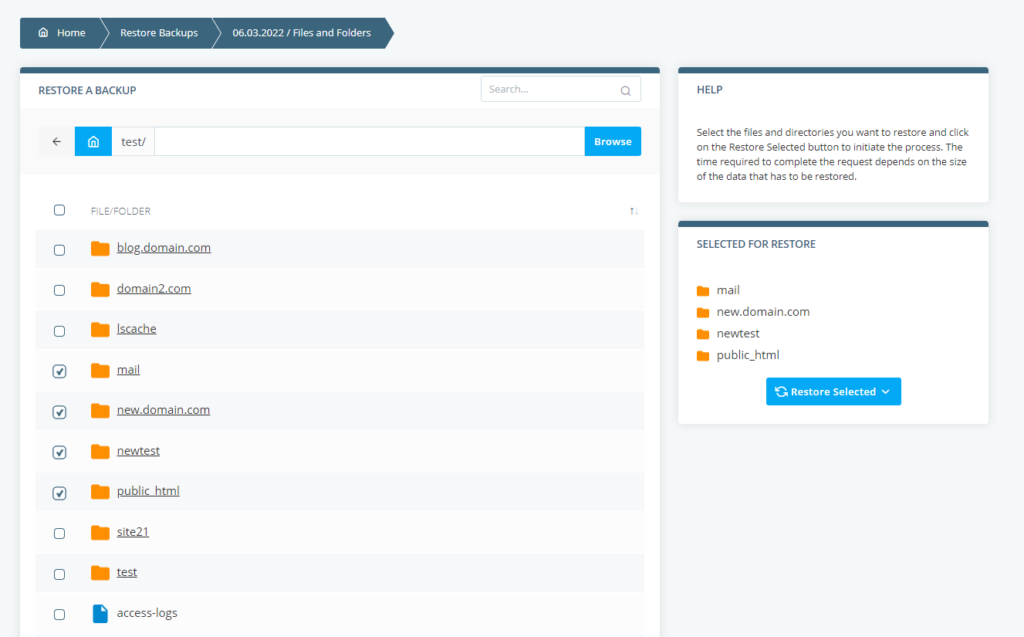ScalaHosting keeps 7 copies (restore points) of your data for the last 7 days. We store the backups on remote backup servers with multiple hard drives. The disks are connected to a hardware RAID controller and configured in RAID. The reason for that is simple. We don’t want to lose your web hosting account’s backups in case of a disk failure.

General overview and accessing backups
ScalaHosting customers have access to their backups 24/7 via their control panel. Users of our self-managed VPS solutions can opt to use R1Soft Backups – an automated backup system. it gives you access to your currently available backup through the R1Soft Restore Backups tool on cPanel’s homepage.

It automatically logs you into the backup server holding the backups of your web hosting or reseller hosting account. On that page you will be able to see all available restore points for your account with the exact date and time when they were generated. On the right of the screen you will see 4 icons allowing you to perform specific actions.
- The first icon allows you to browse the files in your account and restore them. You can restore any file or directory in your account. You can also restore entire email boxes or separate e-mail messages.
- The second icon allows you to browse the databases in your account and restore any of them.
- The third icon gives you an option to download files or directories to your computer directly from the backup server.
- The fourth icon will restore the whole data of your account to an archive on the server.
R1Soft is a comprehensive backup system, but the range of operating systems it supports is rather limited, so most users will need to rely on native tools provided by their control panel. Although they don’t offer quite so many options, you still have everything you need to make sure you can back up and restore data easily. Here, for example, is what SPanel’s backup system looks like.

How do I restore files?
If you use R1Soft, you need to start at the R1soft Restore Backups icon on cPanel’s homepage. Click the first icon which corresponds to the restore point you want to use. See the screenshot below.

A new window will open showing the home directory. You can do a double-click on it to enter your account’s files and choose what exactly you want to restore. You can select multiple files and directories and restore them at the same time. If you have multiple websites under public_html you may want to restore the specific website only. Double-click on the public_html folder to see the list of the files and directories under it and select which ones you want to restore. In this tutorial we will restore the public_html folder which contains all files of the website. In this case that is a website hosted on one of the WordPress hosting plans we offer.

Look at the public_html folder in the screenshot and how it is selected for restore. Once you click on the Restore Selected button a new window will pop up.

When you click on the Restore button the restoration process will start. All files which already exist in your account will be overwritten. The system will not remove any other files though. For example, if you uploaded a file after the restore point was generated and you perform a restore, that file you uploaded will not be removed. That’s why if your account was compromised and you want to restore it to a previous state it’s always best to remove the data before you start the restore. It’s easiest to remove the public_html folder from cPanel -> File manager and then restore it from the backups. Ensure you have a restore point from the desired date before you remove public_html.
If you want to be 100% safe, rename public_html to public_html.bak and then restore the folder. Then you can remove public_html.bak once you are sure everything is working fine.
Once the restore process starts you can monitor it and watch how the data is being copied from the backup server to your web hosting server.
After a successful restore the following will appear on your screen.

The process for restoring files from SPanel’s own backup system is not much different. To restore files from a backup, log into SPanel’s User Interface and click the Restore Backup icon under the Files section.

You will see all the available restore points. Choose the date you want to go back to and click the Browse Files button next to it. You will see the files and folders backed up on the selected date and using the checkboxes next to them, you will be able to choose which ones you want to restore. The Restore Selected button reinstates the data.

How can I restore MySQL databases?
Restoring MySQL databases is just as easy. It is similar to restoring files, however, if you use R1Soft, you need to click on the second icon to browse the databases and restore one or more of them. Once you click on the Browse databases icon a new screen will load and you will see a list of the databases after you click on the arrow. Please see below.

Then you have to select the database you want to restore and click on the Restore Selected button to start the restore process.

The process will take some time to complete depending on the size of the database. Please be patient and if it takes more than 30 minutes please contact us. Once the restore completes successfully you will see the following.

The procedure for SPanel users is not much difference. Once again, they start by logging into SPanel’s User Interface and opening the Restore Backup tool. Next to the restore point they choose, there is a Browse Databases button, which presents a list of the databases backed up on the selected date.

From the Restore drop-down menu next to each database, they can choose to either restore it in its original form or import the data into a new database.